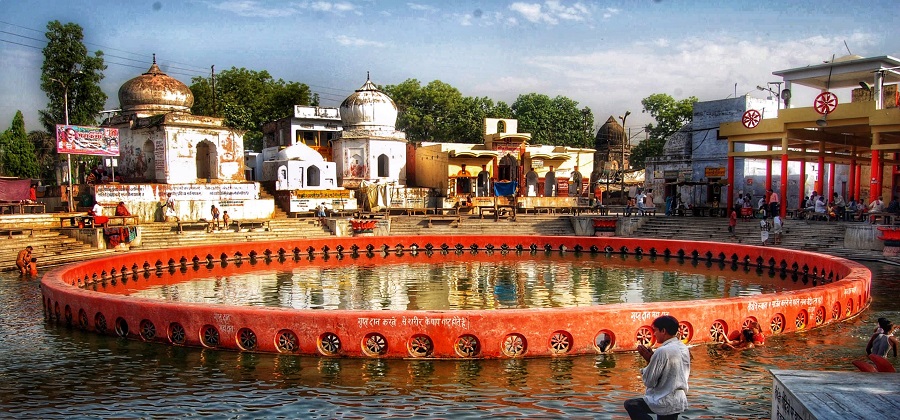Adi Shankaracharya and the Four Mathas of India- Guardians of Vedantic Wisdom: In the 8th century CE, India was a land of diverse beliefs, philosophical sects, and religious practices. Amidst this spiritual mosaic arose Adi Shankaracharya, a profound philosopher and reformer, who dedicated his life to reestablishing the authority of Advaita Vedanta — the non-dualistic interpretation of the Upanishads. To preserve and propagate this ancient wisdom, he undertook a historic mission: to establish four monastic institutions (mathas) in the four corners of India.
These mathas not only served as learning centers but also functioned as pillars of spiritual unity across the subcontinent. They still remain vital to India’s religious and philosophical traditions today.
1. Sringeri Sharada Peetham (South) – Karnataka
-
Established: Around 820 CE
-
Location: Sringeri, Karnataka (Southern India)
-
Presiding Deity: Goddess Sharada (Saraswati – the goddess of learning)
-
Assigned Veda: Yajur Veda
-
Current Successor Title: Jagadguru Shankaracharya of Sringeri Sharada Peetham
History & Significance:
Situated on the banks of the Tunga River, Sringeri was the first matha established by Adi Shankaracharya. According to tradition, he chose the location after witnessing a unique sight — a cobra providing shelter to a pregnant frog from the sun, symbolizing coexistence and spiritual harmony.
Sringeri became a beacon of Vedic scholarship and Advaita Vedanta in southern India. It laid emphasis on rigorous study, contemplation, and spiritual discipline. The Sharada Peetham has produced generations of scholars, many of whom contributed significantly to Indian philosophy, literature, and dharmic traditions.
2. Govardhan Matha (East) – Puri, Odisha
-
Established: Around 820 CE
-
Location: Puri, Odisha (Eastern India)
-
Presiding Deity: Lord Jagannath
-
Assigned Veda: Rig Veda
-
Current Successor Title: Shankaracharya of Govardhan Peetham, Puri
History & Significance:
Situated near the world-famous Jagannath Temple, this matha is also called the Purvamnaya (Eastern) Matha. It was founded to spread the teachings of Advaita Vedanta throughout the eastern regions of India.
The matha has historically had a close association with the Jagannath Temple, one of the four sacred Char Dham pilgrimage sites. The Shankaracharya of Puri is regarded as one of the highest spiritual authorities in eastern India. The matha’s role was not just religious — it also provided guidance on social dharma, rituals, and education.
3. Dwarka Sharada Peetham (West) – Gujarat
-
Established: Around 820 CE
-
Location: Dwarka, Gujarat (Western India)
-
Presiding Deity: Lord Krishna
-
Assigned Veda: Sama Veda
-
Current Successor Title: Shankaracharya of Dwarka Sharada Peetham
History & Significance:
Located in the sacred coastal city of Dwarka, associated with Lord Krishna, this matha represents the western spiritual seat of Shankara’s vision. The site was chosen to symbolize the spread of Sanatana Dharma even in regions distant from the Vedic heartlands.
The matha is known for its scholastic emphasis on Sama Veda and for its role in guiding philosophical discourse, temple management, and dharmic duties in western India. Dwarka also forms one of the four Char Dhams established by Shankaracharya.
4. Jyotirmath (North) – Uttarakhand
-
Established: Around 820 CE
-
Location: Jyotirmath (Joshimath), near Badrinath in Uttarakhand (Northern India)
-
Presiding Deity: Narayana (Vishnu)
-
Assigned Veda: Atharva Veda
-
Current Successor Title: Shankaracharya of Jyotir Peetham
History & Significance:
Nestled in the Himalayas, Jyotirmath (literally “Seat of Light”) is the northernmost matha. It stands as a gateway to Badrinath, one of the holiest sites in Hinduism. This matha was tasked with the study and preservation of the Atharva Veda, the most mystical and ritualistic among the four Vedas.
Despite facing periods of decline due to invasions and geographical challenges, Jyotirmath has seen a strong revival in modern times. It holds immense spiritual significance as the northern outpost of Shankara’s spiritual renaissance.
A Unified Vision: Structure and Legacy
Each of the four mathas was entrusted with the stewardship of one Veda and one of the four Mahavakyas (great philosophical statements from the Upanishads):
| Matha | Direction | Location | Veda | Mahavakya |
|---|---|---|---|---|
| Sringeri | South | Karnataka | Yajur Veda | Aham Brahmasmi (I am Brahman) |
| Puri | East | Odisha | Rig Veda | Prajnanam Brahma (Consciousness is Brahman) |
| Dwarka | West | Gujarat | Sama Veda | Tattvamasi (That Thou Art) |
| Jyotirmath | North | Uttarakhand | Atharva Veda | Ayam Atma Brahma (This Self is Brahman) |
Adi Shankaracharya’s idea was to anchor spiritual continuity across the length and breadth of the country, ensuring that the core ideas of non-dualism and dharmic living would withstand regional diversities and foreign invasions.
In Summary: A Timeless Framework of Wisdom
The four mathas of Adi Shankaracharya are more than monastic institutions — they are living bridges between ancient knowledge and modern seekers. They helped unify India spiritually in a time of fragmentation and continue to play an essential role in preserving Vedic traditions, Advaita philosophy, and Sanatana Dharma.
Adi Shankaracharya’s vision was not just for his time—it was for all time. And through these four mathas, that vision still shines brightly across India.
AC and DC Power: Why Do We Need Both to Power Our World? | Maya



